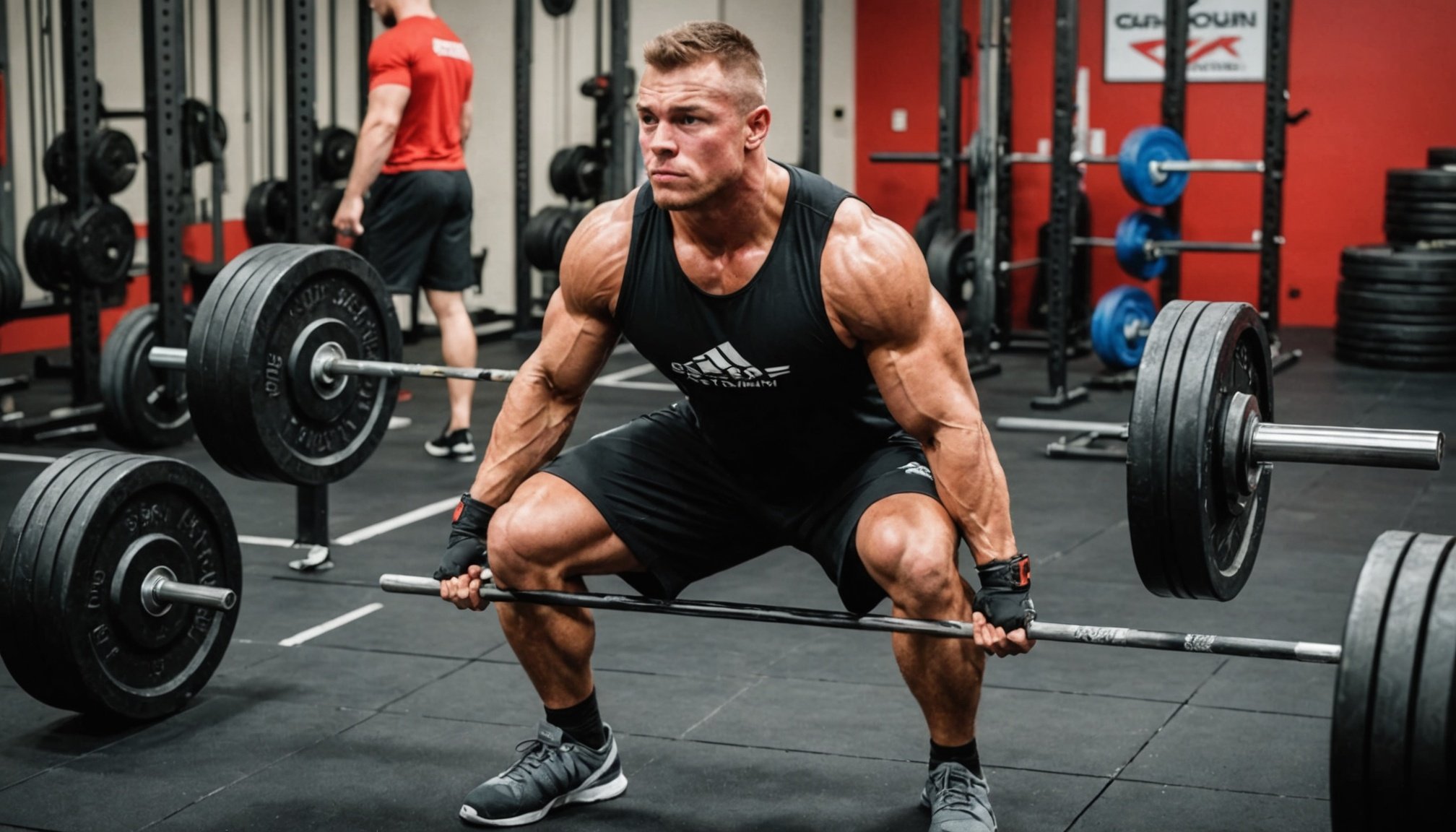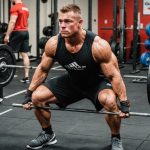Importance of Injury Prevention in Powerlifting
Injury prevention is crucial in powerlifting to sustain training longevity and maximise performance. Common injuries include muscle strains, ligament sprains, and joint discomfort, often arising from improper techniques or overtraining. These injuries can halt progress, affect performance, and sometimes even end a career prematurely. Thus, understanding the causes of injuries and implementing powerlifting safety measures is paramount.
Effective preventive strategies should focus on proper form and technique. Learning and consistently applying the right techniques significantly reduce the risk of injury. Additionally, incorporating adequate warm-up routines and progressively building strength can mitigate injuries, promoting longer training periods without interruptions.
Developing a long-term training plan can aid in maintaining training longevity. Structured programs that balance intensity, volume, and rest ensure muscular recovery and adaptation, which are key to injury prevention. Such plans also prevent overtraining, one of the main catalysts for injuries, by allowing muscles, joints, and ligaments ample time to repair.
Prioritising safety in powerlifting not only enhances training longevity but also ensures sustained progress and peak performance. Implementing these measures consistently will help athletes train efficiently while minimising the risk of setbacks due to injury.
Topic to read : How does parental support influence young athletes’ motivation and performance?
Effective Warm-Up Routines
An effective warm-up is essential for maximizing performance and preventing injuries. Let’s explore different components of a warm-up to prepare your body effectively.
Dynamic Stretching
Dynamic stretching involves controlled movements that increase range of motion and elevate heart rate. It is particularly effective in preparing the body for powerlifting. Examples include leg swings, arm circles, and torso twists. These warm-up techniques enhance blood flow and reduce muscle stiffness, providing a smooth transition into a workout.
Specific Mobility Drills
Mobility exercises are essential for targeting frequently tight areas, ensuring comprehensive muscle flexibility and joint range. Hip circles, ankle rotations, and shoulder dislocates are common choices, emphasizing a holistic approach to mobility exercises. These drills help prevent injuries by addressing areas prone to stiffness.
Activation Exercises
Activation exercises focus on engaging and awakening specific muscle groups essential for optimal performance. Glute bridges, band pull-aparts, and scapular push-ups are critical for engaging involved muscles in powerlifting. Incorporating these exercises ensures that your body is well-prepared and responsive during workouts, enhancing overall strength and injury prevention efforts.
By integrating these elements into your routine, you can ensure a well-rounded warm-up that effectively prepares both mind and body for physical activity.
Proper Lifting Techniques
Understanding and implementing proper lifting form is essential not only for enhancing performance but also for injury prevention. This involves a dedicated focus on the stance and grip, as well as an understanding of the biomechanics involved in various lifting exercises.
Correct Stance and Grip
A fundamental aspect of lifting is adopting the correct stance and grip, adaptable to each individual. The stance provides the foundation and stability for the lift, while the grip ensures control. Variability may occur between individuals due to body mechanics, necessitating adjustments to optimize both safety and effectiveness.
Biomechanics of Lifting
The biomechanics of lifting plays a pivotal role in how efficiently and safely a lift is executed. An awareness of the body’s mechanics allows for strategic movement patterns to be formed, reducing unnecessary strain on muscles and joints. Effective biomechanics align the body correctly and maintain balance and force distribution throughout the lift.
Techniques for Different Lifts
Each lift, such as squats, deadlifts, and bench presses, demands unique technique tips tailored to the exercise’s specific biomechanics. For squats, maintaining an upright torso and ensuring knee alignment are key. Deadlifts necessitate keeping the bar close to the body, and bench presses benefit from a stable shoulder placement. Individualized injury reduction strategies are crucial for maintaining long-term lifting practice and improving overall fitness levels.
Recovery Strategies
Effective recovery strategies are crucial for maintaining peak performance and preventing injuries. Let’s dive into some essential components of post-workout care.
Importance of Rest Days
Rest days are non-negotiable for optimal muscle recovery. They allow the body to repair, adapt, and grow stronger. Skipping rest days can lead to fatigue, overuse injuries, and decreased performance levels. A well-planned rest day provides your muscles the necessary time to rebuild after intense training sessions.
Active Recovery Techniques
Incorporating active recovery methods can further enhance recovery. Activities such as light swimming, yoga, or brisk walking help maintain muscle recovery without the strain of intense exercise. These techniques promote blood flow, helping flush out metabolic waste and reduce muscle stiffness.
Nutrition and Hydration for Recovery
Proper nutrition and hydration play a pivotal role in post-workout care. Consuming a balanced diet with adequate protein aids in repairing muscle fibers. Equally important is staying hydrated, as water is necessary for all bodily processes, including muscle repair. Integrate these strategies into your routine to maximize recovery and boost overall performance.
Equipment and Gear Considerations
Choosing the right powerlifting gear is essential for both performance and injury prevention. This section explores the significance of supportive gear to lift safely and effectively.
Appropriate Footwear
Footwear is crucial for powerlifters, focusing on stability and support. Key features of supportive footwear include a flat sole and sturdy construction, promoting balance during lifts. Shoes with a raised heel can also aid in squats by improving depth, subsequently enhancing performance.
Belts and Support Gear
Lifting belts offer a vital role in injury prevention, protecting the lower back during heavy lifts. By providing intra-abdominal pressure, belts help stabilize the spine. Wraps, such as wrist wraps, also contribute to support, maintaining joint health by reducing strain.
Accessories for Stability
Incorporating accessories like knee sleeves and elbow wraps can bolster joint integrity. Knee sleeves provide warmth and compression, encouraging circulation and reducing the risk of injury. Elbow wraps are beneficial in pressing movements, offering stability and enhancing recovery.
These elements collectively contribute to optimal performance and safety in powerlifting. Selecting the right gear not only supports an athlete physically but also fosters confidence during challenging lifts.
Insights from Experienced Powerlifters
Gathering expert advice from the realm of powerlifting can be monumental for both novices and veterans alike. Through detailed interviews with seasoned athletes, several powerlifting insights emerge that can propel your training forward.
Strategies from Professional Lifters
One of the consistent powerlifting insights from professional lifters is the significance of structuring a balanced routine. Key strategies include periodised training schedules to ensure optimal recovery and progression. Many emphasize the importance of incorporating variety to prevent stagnation and promote overall strength. As shared in expert advice, alternating between heavy and light days, as well as incorporating accessory exercises, can enhance your lifting prowess exponentially.
Common Mistakes to Avoid
Avoiding overtraining is a frequent tip found in expert advice circles. Experienced powerlifters caution against the allure of immediate gains, noting that this often leads to burnout and plateaus. During interviews, they underscore the importance of paying attention to form over the amount of weight lifted. Misjudgement in technique is a hazard that not only affects performance but heightens injury risk.
Personal Injury Prevention Experiences
Through personal anecdotes shared in interviews, the role of injury prevention has been notably stressed. Lifters reflect on past injuries, citing improper warm-ups or lack of flexibility training as primary culprits. Expert advice regularly highlights the integration of mobility exercises and proper rest to safeguard against common pitfalls and promote longevity in the sport.











